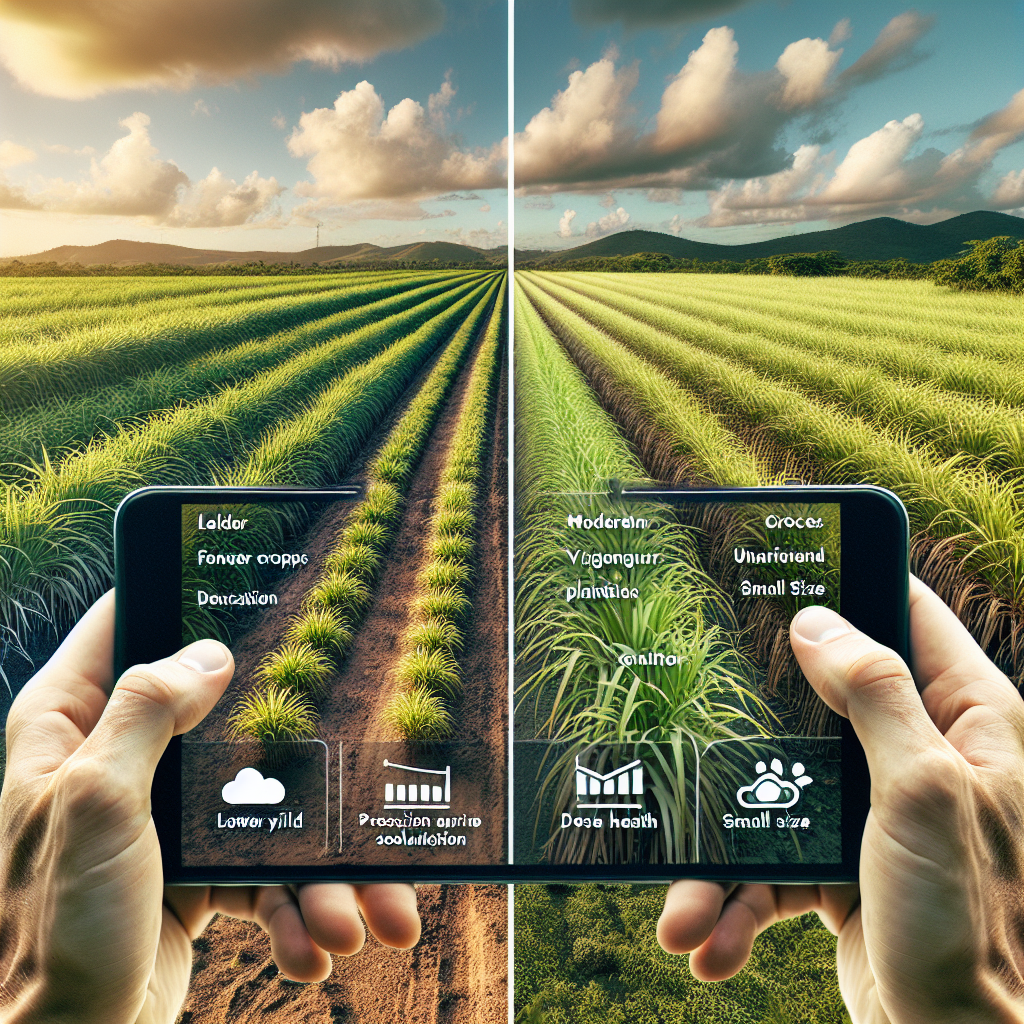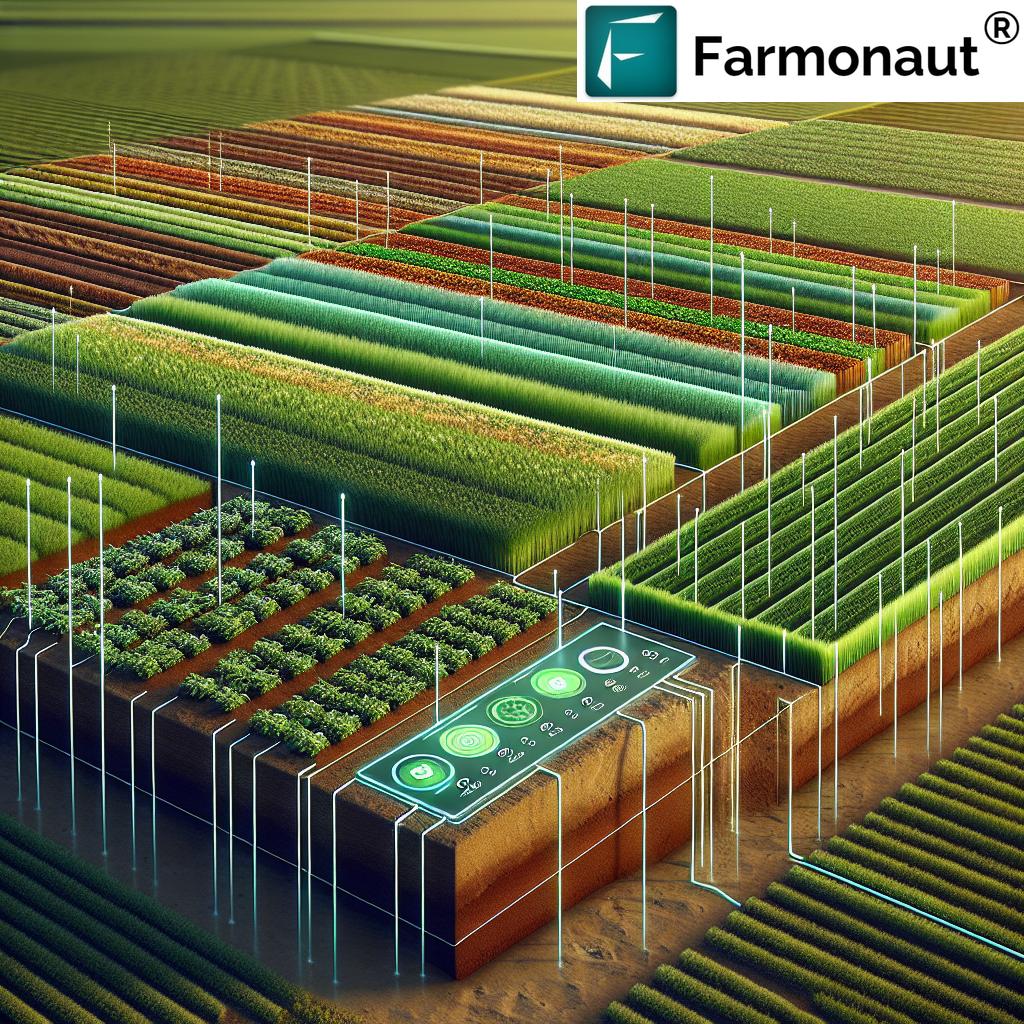Mexico’s Bold Step into Precision Agriculture: Inspiration from Farmonaut’s Success

At Farmonaut, we’re thrilled to see our innovative approach to precision agriculture inspiring similar initiatives worldwide. Today, we’re excited to discuss Mexico’s recent announcement to build a robust infrastructure for precision agriculture, drawing inspiration from cutting-edge startups like ours.
Mexico’s Leap into the Future of Farming
The Mexican Space Agency (AEM), a decentralized body of the Ministry of Communications and Transportation (SCT), has partnered with the Universidad Autónoma del Estado de México (UAEMEX) to launch a groundbreaking pilot program. This initiative aims to harness satellite technology to boost agricultural productivity through precision agriculture techniques.
This move by Mexico is a testament to the growing recognition of the importance of technology in agriculture. It also highlights how our work at Farmonaut is setting benchmarks in the industry, encouraging nations to adopt similar approaches.
Understanding Precision Agriculture
Precision agriculture, also known as smart farming, is an approach to farm management that uses information technology and a wide array of items such as GPS guidance, control systems, sensors, robotics, drones, autonomous vehicles, variable rate technology, GPS-based soil sampling, automated hardware, telematics, and software. The goal is to optimize returns on inputs while preserving resources.
Key Components of Precision Agriculture:
- Remote Sensing: Using satellite or drone imagery to monitor crop health and field conditions
- GPS Technology: For accurate mapping and guidance of farm equipment
- IoT Sensors: To collect data on soil conditions, weather, and crop health
- Data Analytics: To process and interpret the vast amounts of data collected
- Variable Rate Technology: For precise application of inputs like water, fertilizers, and pesticides
The Mexican Initiative: A Closer Look
The collaboration between AEM and UAEMEX is set to revolutionize Mexican agriculture. Here’s what we know about the initiative:
- Satellite Technology Integration: The program will leverage satellite imagery for crop monitoring and analysis.
- National Laboratory of Earth Observation (LANOT): UAEMEX’s newly opened facility will play a crucial role in gathering and processing satellite data.
- Pilot Program: The initiative will start as a pilot, likely focusing on key agricultural regions in Mexico.
- Productivity Focus: The primary goal is to increase agricultural productivity using precision agriculture techniques.
- Inter-American Development Bank Support: The initiative is backed by studies from this prestigious institution, underlining its potential impact.
How Farmonaut’s Model Inspires Global Initiatives
At Farmonaut, we’ve been at the forefront of precision agriculture and agritech solutions. Our satellite-based farm management system has set new standards in the industry, inspiring initiatives like Mexico’s. Here’s how our approach aligns with and potentially influences such programs:
1. Satellite-Based Crop Health Monitoring
Our core technology uses multispectral satellite imagery to provide real-time insights into crop health. This includes:
- Vegetation health indices (NDVI)
- Soil moisture analysis
- Crop stress detection
These capabilities are likely to be central to Mexico’s initiative, allowing farmers to make data-driven decisions about irrigation, fertilization, and pest management.
2. AI-Powered Advisory Systems
Our Jeevn AI system offers personalized farm advice based on satellite data and other inputs. This kind of AI-driven approach could be a game-changer for Mexican agriculture, providing farmers with:
- Real-time crop management strategies
- Weather forecasts and alerts
- Pest and disease predictions
3. Blockchain-Based Traceability
While not explicitly mentioned in Mexico’s announcement, our blockchain-based traceability solutions could be an excellent addition to their program. This technology ensures:
- Transparent supply chains
- Enhanced food safety
- Improved consumer trust
4. Accessibility and Affordability
One of our core missions at Farmonaut is to make precision agriculture accessible and affordable for farmers of all scales. This approach is likely to be crucial for Mexico’s success, ensuring that the benefits of technology reach even small-scale farmers.
The Advantages of Satellite-Based Systems
As Mexico embarks on this journey, it’s worth highlighting why satellite-based systems, like ours at Farmonaut, offer significant advantages over drone and IoT-based farm monitoring:
| Feature | Farmonaut Satellite System | Drone-based Systems | IoT-based Systems |
|---|---|---|---|
| Coverage Area | Large (thousands of hectares) | Limited (few hundred hectares) | Very Limited (few hectares) |
| Frequency of Data | Daily to weekly | On-demand (labor-intensive) | Continuous but localized |
| Initial Setup Cost | Low | High | Medium to High |
| Operational Complexity | Low (automated) | High (requires skilled operators) | Medium (requires maintenance) |
| Data Processing | Automated and AI-driven | Often manual or semi-automated | Automated but limited in scope |
| Scalability | Highly scalable | Limited scalability | Moderate scalability |
The Potential Impact on Mexican Agriculture
The implementation of a precision agriculture infrastructure in Mexico could have far-reaching effects:
1. Increased Crop Yields
By optimizing resource use and making data-driven decisions, farmers can significantly increase their crop yields. Our experience at Farmonaut has shown yield improvements of up to 20% in some cases.
2. Resource Conservation
Precision agriculture allows for more efficient use of water, fertilizers, and pesticides. This not only reduces costs but also minimizes environmental impact.
3. Climate Resilience
With better prediction and monitoring capabilities, farmers can adapt more effectively to changing climate conditions, reducing crop losses due to extreme weather events.
4. Economic Benefits
Improved productivity and reduced input costs can lead to higher profitability for farmers, contributing to overall economic growth in the agricultural sector.
5. Food Security
By increasing agricultural productivity, Mexico can enhance its food security, reducing dependence on imports and potentially becoming a larger exporter of agricultural products.
Challenges and Considerations
While the potential benefits are significant, implementing a nationwide precision agriculture system comes with challenges:
- Infrastructure Development: Building the necessary satellite and ground infrastructure will require significant investment.
- Farmer Education: Training farmers to use new technologies effectively will be crucial for the program’s success.
- Data Privacy and Security: Ensuring the security of farm data will be essential to gain farmers’ trust and participation.
- Integration with Existing Practices: The new system must be seamlessly integrated with traditional farming methods to ensure adoption.
- Connectivity in Rural Areas: Reliable internet connectivity in remote agricultural regions may be a challenge.
Farmonaut’s Role in Shaping Global Agriculture
As pioneers in satellite-based precision agriculture, we at Farmonaut are proud to see our innovative approach inspiring global initiatives. Our commitment to making advanced agricultural technologies accessible and affordable has set a benchmark that countries like Mexico are now following.
We offer a range of solutions that could be valuable for similar initiatives:
- Satellite Monitoring System: Our core platform for crop health monitoring and analysis. Try our app.
- API Access: For developers and businesses looking to integrate our data into their systems. Explore our API.
- Mobile Applications: Available for both Android (Google Play) and iOS (App Store).
- Weather API: Detailed weather data for agricultural purposes. View API documentation.
The Future of Precision Agriculture
As we look to the future, we see precision agriculture becoming increasingly integral to global food production. Initiatives like Mexico’s, inspired by companies like Farmonaut, are just the beginning. We anticipate:
- Greater Integration of AI and Machine Learning: For even more accurate predictions and recommendations.
- Expansion of Blockchain in Agriculture: Enhancing traceability and transparency across the entire food supply chain.
- Development of More Sophisticated Sensors: For even more detailed on-ground data collection.
- Increased Focus on Sustainability: Using precision agriculture to minimize environmental impact and promote sustainable farming practices.
- Global Collaboration: More countries adopting and sharing precision agriculture technologies and practices.
Conclusion
Mexico’s initiative to build a precision agriculture infrastructure marks a significant step forward in the global adoption of smart farming technologies. Inspired by innovative companies like Farmonaut, this move demonstrates the growing recognition of the crucial role that technology plays in addressing agricultural challenges.
As we continue to develop and refine our satellite-based farm management solutions, we’re excited to see how our work influences and supports similar initiatives worldwide. The future of agriculture is data-driven, sustainable, and increasingly precise – and we’re proud to be at the forefront of this agricultural revolution.
FAQs
Q: What is precision agriculture?
A: Precision agriculture is an approach to farm management that uses information technology and various tools like GPS, sensors, and satellite imagery to optimize crop yields and reduce resource waste.
Q: How does satellite-based monitoring improve farming?
A: Satellite-based monitoring provides real-time data on crop health, soil moisture, and other critical factors, allowing farmers to make informed decisions about irrigation, fertilization, and pest control.
Q: Is precision agriculture only for large farms?
A: No, precision agriculture can benefit farms of all sizes. Companies like Farmonaut aim to make these technologies accessible and affordable for small and medium-sized farms as well.
Q: How does Mexico’s initiative compare to other countries?
A: Mexico’s initiative is part of a growing global trend. Many countries, including the US, India, and several European nations, have been implementing precision agriculture programs. Mexico’s program is notable for its focus on satellite technology and collaboration with academic institutions.
Q: What role does AI play in precision agriculture?
A: AI in precision agriculture helps analyze vast amounts of data from satellites, sensors, and other sources to provide actionable insights and predictions for farmers, improving decision-making and efficiency.
Q: How can farmers get started with precision agriculture?
A: Farmers can start by exploring satellite-based monitoring services like Farmonaut, which offer user-friendly apps and affordable subscription plans. It’s also beneficial to attend workshops or webinars on precision agriculture techniques.
Q: What are the environmental benefits of precision agriculture?
A: Precision agriculture helps reduce the use of water, fertilizers, and pesticides by applying them only where and when needed. This leads to less environmental impact and promotes sustainable farming practices.
Q: How does precision agriculture contribute to food security?
A: By optimizing crop yields and reducing losses, precision agriculture helps increase overall food production. This is crucial for meeting the growing global demand for food and ensuring food security in the face of climate change and population growth.
We hope this comprehensive overview has provided valuable insights into Mexico’s exciting new initiative and how it relates to the broader landscape of precision agriculture. As always, we at Farmonaut remain committed to driving innovation in this field and supporting farmers worldwide in their journey towards more efficient, productive, and sustainable agriculture.













